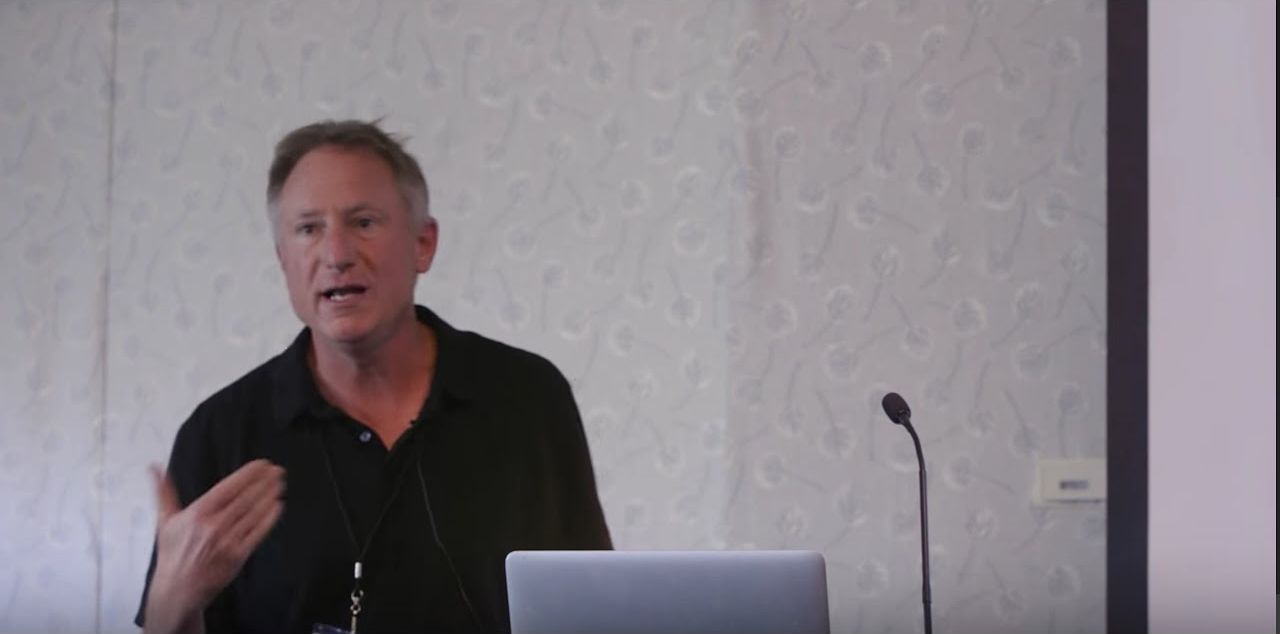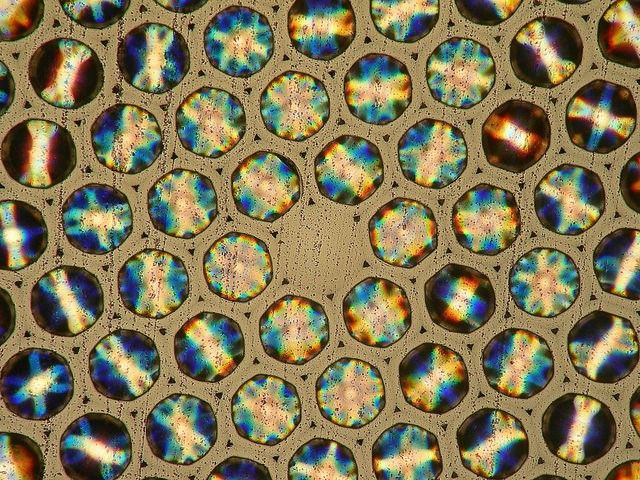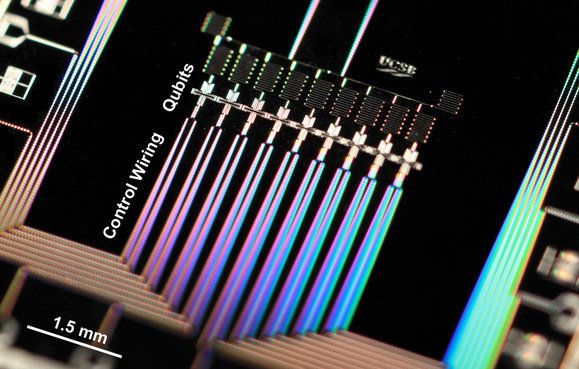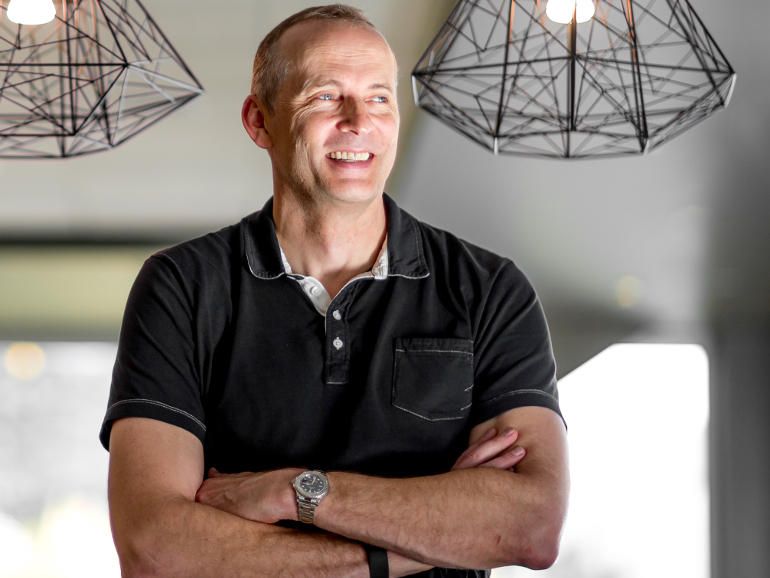Archive for the ‘computing’ category: Page 726
Nov 25, 2016
For the First Time, Living Cells Have Formed Carbon-Silicon Bonds
Posted by Klaus Baldauf in categories: biological, computing
Scientists have managed to coax living cells into making carbon-silicon bonds, demonstrating for the first time that nature can incorporate silicon — one of the most abundant elements on Earth — into the building blocks of life.
While chemists have achieved carbon-silicon bonds before — they’re found in everything from paints and semiconductors to computer and TV screens — they’ve so far never been found in nature, and these new cells could help us understand more about the possibility of silicon-based life elsewhere in the Universe.
After oxygen, silicon is the second most abundant element in Earth’s crust, and yet it has nothing to do with biological life.
Continue reading “For the First Time, Living Cells Have Formed Carbon-Silicon Bonds” »
Nov 24, 2016
New quantum states for better quantum memories
Posted by Karen Hurst in categories: computing, particle physics, quantum physics
How can quantum information be stored as long as possible? An important step forward in the development of quantum memories has been achieved by a research team of TU Wien.
Conventional memories used in today’s computers only differentiate between the bit values 0 and 1. In quantum physics, however, arbitrary superpositions of these two states are possible. Most of the ideas for new quantum technology devices rely on this “Superposition Principle.” One of the main challenges in using such states is that they are usually short-lived. Only for a short period of time can information be read out of quantum memories reliably, after that it is irrecoverable.
A research team at TU Wien has now taken an important step forward in the development of new quantum storage concepts. In cooperation with the Japanese telecommunication giant NTT, the Viennese researchers lead by Johannes Majer are working on quantum memories based on nitrogen atoms and microwaves. The nitrogen atoms have slightly different properties, which quickly leads to the loss of the quantum state. By specifically changing a small portion of the atoms, one can bring the remaining atoms into a new quantum state, with a lifetime enhancement of more than a factor of ten. These results have now been published in the journal “Nature Photonics.”
Nov 24, 2016
More reliable way to produce single photons
Posted by Karen Hurst in categories: computing, particle physics, quantum physics
Physicists at the University of Bath have developed a technique to more reliably produce single photons that can be imprinted with quantum information.
The invention will benefit a variety of processes which rely on photons to carry quantum information, such as quantum computing, secure quantum communication and precision measurements at low light levels.
Photons, particles of light, can be imprinted with information to be used for things like carrying out calculations and transmitting messages. To do this you need to create individual photons, which is a complicated and difficult process.
Nov 23, 2016
The Dangers of Quantum Computing
Posted by Karen Hurst in categories: augmented reality, computing, quantum physics
Any technology with the word “quantum” in the name is by nature impossible for lay people to understand and even difficult for scientists to get their arms fully around. However, though its workings are mysterious, quantum science offers very useful everyday tools.
There has been a race for quantum computing for years. Part of the reason is that these devices will leave today’s computers in the dust. The other element is that planners see that current computing technology is reaching its growth limits. Quantum computing is the key to the future to them, not science fiction.
Microsoft, which Computerworld says has been researching quantum computing for more than a decade, is expanding its quantum computing efforts. It has put Todd Holmdahl, one of the people involved in the development of Kinect, HoloLens and Xbox, in charge of developing quantum hardware and software. It’s also hired professors from the Delft University of Technology in the Netherlands; the University of Copenhagen; ETH Zurich and University of Sydney in Australia.
Nov 23, 2016
Qubits in brain can make it a quantum computer?
Posted by Karen Hurst in categories: biological, computing, neuroscience, particle physics, quantum physics

The mere mention of “quantum consciousness” makes most physicists cringe, as the phrase seems to evoke the vague, insipid musings of a New Age guru. But if a new hypothesis proves to be correct, quantum effects might indeed play some role in human cognition. Matthew Fisher, a physicist at the University of California, Santa Barbara, raised eyebrows late last year when he published a paper in Annals of Physics proposing that the nuclear spins of phosphorus atoms could serve as rudimentary “qubits” in the brain — which would essentially enable the brain to function like a quantum computer.
Isher’s hypothesis faces the same daunting obstacle that has plagued microtubules: a phenomenon called quantum decoherence. To build an operating quantum computer, you need to connect qubits — quantum bits of information — in a process called entanglement. But entangled qubits exist in a fragile state. They must be carefully shielded from any noise in the surrounding environment. Just one photon bumping into your qubit would be enough to make the entire system “decohere,” destroying the entanglement and wiping out the quantum properties of the system. It’s challenging enough to do quantum processing in a carefully controlled laboratory environment, never mind the warm, wet, complicated mess that is human biology, where maintaining coherence for sufficiently long periods of time is well nigh impossible.
Continue reading “Qubits in brain can make it a quantum computer?” »
Nov 23, 2016
From Bitcoin to puke-tracking: Walmart uses blockchains to monitor food — By Beth Mole | Ars Technica UK
Posted by Odette Bohr Dienel in categories: business, computing

“In October, the commercial giant teamed up with IBM and Tsinghua University in Beijing to track pork in China as it moves from the farm to the shelves.”
Tag: blockchain
Nov 22, 2016
Microsoft ‘doubles down’ on quantum computing hardware focus
Posted by Karen Hurst in categories: augmented reality, computing, quantum physics
Microsoft is accelerating its efforts to make a quantum computer as it looks to a future of computing beyond today’s PCs and servers.
Microsoft has researched quantum computing for more than a decade. Now the company’s goal is to put the theory to work and create actual hardware and software.
To that effect, Microsoft has put Todd Holmdahl—who was involved in the development of Kinect, HoloLens, and Xbox—to lead the effort to create quantum hardware and software. The company has also hired four prominent university professors to contribute to the company’s research.
Continue reading “Microsoft ‘doubles down’ on quantum computing hardware focus” »
Nov 22, 2016
Microsoft’s next big bet? Clue: it’s just hired four top quantum computing scientists
Posted by Karen Hurst in categories: computing, quantum physics
We told them glad they listen.
Microsoft says it’s doubling down on quantum computing after nabbing four top scientists who will work with a Microsoft hardware veteran to turn research into reality.
Nov 22, 2016
New Quantum States For Better Quantum Storage
Posted by Karen Hurst in categories: computing, particle physics, quantum physics
Quantum and Crystalize formations for data storage.
How can you store quantum information as long as possible? A team from the Vienna University of Technology is making an important step forward in the development of quantum storage.
The memory that we use today for our computers differs only between 0 and 1. However, quantum physics also allows arbitrary superimpositions of states. On this principle, the “superposition principle”, ideas for new quantum technologies are based. A key problem, however, is that such quantum-physical overlays are very short-lived. Only a tiny amount of time you can read the information from a quantum memory reliably, then it is irretrievably lost.
Continue reading “New Quantum States For Better Quantum Storage” »













